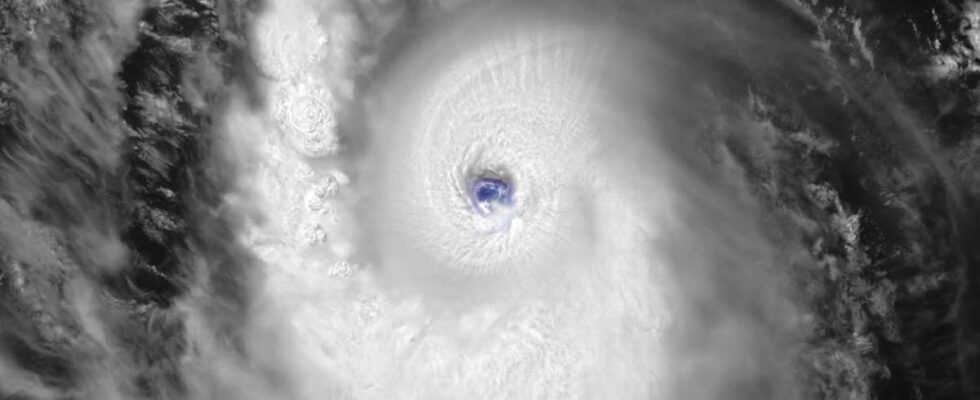Hurricane Beryl has reached the Caribbean from the Atlantic with full force. It is expected that it will ravage several populated islands. Hundreds of thousands of people could be affected. The hurricane hit the island of Carriacou in Grenada at 5pm on Monday and is heading into the Caribbean Sea. The news agency AP reports that “Beryl” hit land with a wind force of up to 240 kilometers per hour. Several roofs and trees have already been blown away. According to the US authorities, “Beryl” is extremely dangerous. It threatens life and health, and can cause great destruction. Your browser does not support the embedding of external content The National Hurricane Center has put the hurricane at category 4, the second highest level. It is the first time a Category 4 hurricane has been recorded so early in the season, writes the AFP news agency. Has steeled itself On Monday, “Beryl” is expected to hit the islands of Barbados, Grenada, Saint Lucia, Tobago and Saint Vincent and the Grenadines. Together, they have over 700,000 inhabitants. The local population of the Caribbean islands steeled themselves in anticipation of the hurricane’s landfall. A street floods in Barbados. Photo: Ricardo Mazalan / AP/NTB Waves and strong winds hit Barbados. Photo: Ricardo Mazalan / AP/NTB Residents nail wooden boards to a home on the island of Barbados. Photo: Ramon Espinosa / AP/NTB Many have hoarded water, food and other necessary items ahead of the hurricane. Photo: Nigel R Browne / Reuters/NTB The shops were busy the day before the hurricane was due to hit. Photo: Nigel R Browne / Reuters/NTB In Trinidad and Tobago, soldiers have been mobilized to assist. Photo: Jermaine Cruickshank/Trinidad Express / Reuters/NTB Many have sought shelter in shelters or barricaded their homes. Pictures show busy shops where people stock up on food, water and other necessary items. The residents have done what they can to protect homes and other valuables. Many have nailed wooden boards to buildings in the hope of shielding them from destruction. – More will probably lose their lives Ingrid Marie Widvey from Karmøy has lived on the island of St. Thomas for the past ten years. She and her family have experienced several powerful hurricanes. Among other things, two category 5 hurricanes, including hurricane “Irma” in 2017. She fears that the consequences of “Beryl” could be catastrophic for the islands that are hit hardest. – More will probably lose their lives. It has been 20 years since they last had a hurricane in those areas. 40 people died then, says Widvey. Ingrid Marie Widvey (right) and daughter Sophia (13) on the island of St. Thomas. Photo: Privat She does not believe that the islands hit hardest are prepared for the consequences. Both because poverty is very widespread there, and because the countries lack proper support apparatus. – Down there, they don’t usually get hurricanes at all. They don’t have the drainage and other infrastructure to handle a hurricane of this strength, so they are not properly prepared, says Widvey. She says that the hurricanes are coming unusually early in the Caribbean this year. – During the ten years we have lived here, we have never had either storms or hurricanes in June. Hurricane season usually begins in August or September and lasts until November, says Widvey. It has already been announced that there may be more storms and hurricanes in the near future. – It looks like it will be a long hurricane season, says Widvey. I think that the current will disappear St. Thomas is further north than the islands that are hit hardest by “Beryl”. This is what St. Thomas looked like at 7pm on Monday. Photo: Ingrid Marie Widvey The Karmøy family will probably not be hit hard, but are prepared that the storm will have consequences for them as well. Currently, six others from Karmøy are also visiting them. – There can be quite strong gusts of wind and a lot of rainfall, in addition to some lightning and thunder. Most likely our power will go out. It tends to do that, says Widvey. When “Irma” hit St. Thomas in 2017, they also lost power. Back then it took half as long as it was back. – Fortunately, we have a generator and a satellite phone. There is no running water here, so you have to have electricity, says Widvey. She adds that many of those who live on the islands that are hit hard do not have aggregates – It is important to remember that the people who live there are incredibly poor, says Widvey. Published 01.07.2024, at 20.33 Updated 01.07.2024, at 20.50
ttn-69
– More people will probably lose their lives – news Urix – Foreign news and documentaries

